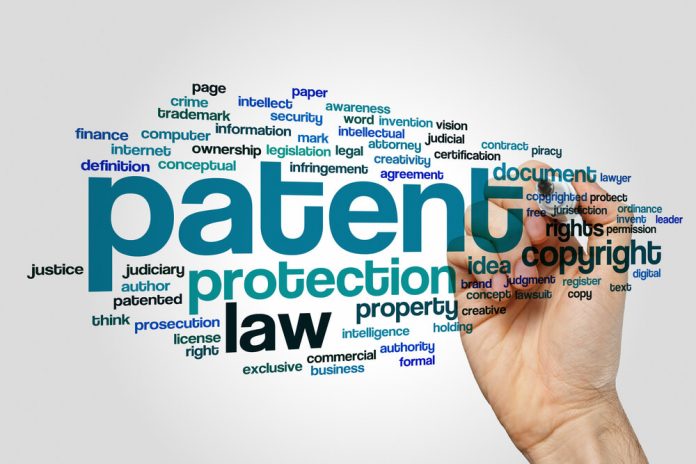This article is written by Ronika Tater, from the University of Petroleum and Energy Studies, School of Law. In this article, she discusses the establishment of patents, legal framework simultaneously in global and India, the procedure of filing the patent with the help of case laws, and also its role in the Indian economy by showing some light in the present scenario.
Table of Contents
Introduction
In this technology era, the invention defines the parameters of an economy in the nation. The development in the field of science and technology plays a vital role in the economy. In the present scenario, recognizing intellectual ideas is the major task of the government for its economic growth and hence, an invention comes into the picture. Not only invention is essential, but the protection of that invention is preponderant.
What is a Patent
The patent is a legal right for invention, by applying. It is not an automatic right that comes into existence, unlike copyrights which exist automatically, and registered design which only requires registration and also trademark by registration for distinctive identification of products or services.
Patents as ‘Social Contracts’
The social contract in general is a political philosophy, or an agreement between the government and the citizen, defining the rights and duties of each for the benefit of the society. Similar ideas were traced from the Frenchman, Jean-Jacques Rousseau, in Du Contrat social (1762; The Social Contract) held that in the state of nature humans were unwarlike and somewhat undeveloped in their logical reasoning and sense of morality and value. However, people use to surrender their freedom for the establishment of rules and regulations to gain a sense of moral and civic obligation. In the same sense, a patent is a social contract as after the disclosure of the invention by the inventor in a form of the document the inventor gets a patent right, also known as a negative right for the disclosure of its invention for the benefit of the society.
The role of the patent system
There is no conclusive proof if a patent is required in society. It has existed for more than five hundred years so we cannot get off from it. It plays a vital role in the economy of a country for its development and growth for its below-mention role:
- Encourage technical innovation. Innovation is a broad concept where an inventor willing to commercialize his invention, protect or invest in the invention.
- To promote competition and investment or creation of a competitive market as a patent means something that is in the scarcity of knowledge in the society and needs to be appreciated and protected.
- To provide information on the latest technical developments.
- To promote technology transfer.
Further, the first account of a “patent system” was traced in the ancient Greek city of Sybaris around 510 BC. During that time the leaders decreed that, if a cook invents an appetizing new dish, no other cook is to be permitted to prepare the same dish for one year. It means that only the inventor shall retain the commercial profits from the dish. This motivated others to work hard and compete in new inventions.
Introduction to the patent system
It was first introduced by the Senate of Venice, 1474 and also the earliest known administrative procedure for the grant and protection of patents. The new law for patent throughout the territories of Venice stated that “Any person in this city who makes new and ingenious contrivance, not made heretofore in our dominion, shall, as soon as it is perfected so that it can be used and exercised, give notice of the same to our State Judicial Office, it being forbidden up to 10 years for any other person in any territory of ours to make a contrivance in the form and resemblance thereof”.
International legal framework on patent law
In the late 19th Century the importance of recognizing patent law was raised in the form of treaties and agreements:
- Paris Convention was the first intellectual property treaties and the scope of protection of industrial properties cover patents under Article 1(2) read with A. 1(4) of the Paris Convention to protect industry property and it does not give procedural or substantive principles, but an only general principle. It also states the three principle below-mention:
- National Treatment, in the simple term which means equal treatment to both the members of domestic and foreign.
- Right to Priority.
- Independence of Right.
- World Intellectual Property Organisation (“WIPO”) provides two main objectives:
- To promote the protection of intellectual property worldwide.
- To ensure administrative cooperation among the intellectual property unions established by the treaties that WIPO administered in 1967.
- Patent Law Treaty administered under the WIPO for the streamlining procedural.
- Patent Cooperation Treaty administered under the WIPO.
- The Budapest treaty by WIPO provides the deposit of biological organisms or microorganisms for the patent procedure.
- The Agreement on Trade-Related Aspects of Intellectual Property Rights (“TRIPS”) is an international legal agreement between all the member nations of the World Trade Organisation (WTO) which provides for standards relating to minimum standards of protection, enforcement and disputes resolution. Under Article 27 and 28 of the TRIPS, the invention must qualify three basic requirements as below-mentioned:
- The invention in all the fields of technology in any product or process.
- Conditions of patentability mean the newness, also known as a novelty in the inventive step and capable of industrial application.
- Exclusive rights in nature that prevent the third party from making, using, offering for sale, selling, or importing for unauthorized use.
However, the change from the Paris convention to the TRIPS Agreement depicts how trade and commercialization were involved.
The Indian Patent Act, 1970
The history of the patent system throughout these years is as follows:
- Act VI of 1856 on the protection of inventions
- The Act modified as act XV Patent monopolies called exclusive privileges, 1859
- The Patterns & Designs Protection Act, 1872
- The Protection of Inventions Act, 1883
- Consolidates as the Inventions & Designs Act, 1888
- The Indian Patents & Designs Act, 1911
- The Indian Patent Act, 1970
- Amendment Act, 1999
- The Patents (Amendment) Act of 2002
- The Patents (Amendment) Act, 2005
The primary objective of the Indian Patent Act:
- To encourage inventions and to secure that the inventions are worked in India.
- To enable patentees( inventors) to enjoy a monopoly.
- Protection and enforcement of patent rights for the promotion of technological innovation and dissemination of technology.
- Mutual advantage of producers and users of technological knowledge to conductive social and economic welfare.
- Balance the rights and obligations.
- To act as an instrument to promote public interest.
- The patent right is not abused and does not resort to practices that unreasonably restrain trade or adversely affect the international transfer of technology.
- To benefit the patented invention available at reasonable prices to the public.
What can be patented in India
The patent is not easy to process to be approved in the patent office, it has to pass the twin test:
- Patentability Requirement under Section 2(1)(j) of the Indian Patent Act:
- novelty – new intention and not in public domain or knowledge
- Inventive step
- Capable of industrial application
- Subject matter registration under Section 3 and 4 of the Indian Patent Act:
- Excluded Subject matter
- Inventions relating to the atomic energy
In the case, Biswanath Prasad Shyam v. Metal Industries, it was held that mere workshop improvement is not enough, the obviousness has to be strictly and objectively judged and it also laid down the steps to determine inventive steps. In the Novartis AG v. Union of India, 2013, the Supreme Court rejected the patent application under Section 3 of the Act by IPAB for Beta Crystalline form of “Imatinib mesylate” on the grounds the drug did not produce any newness to the known substance i.e., “Imatinib mesylate”.
Hence, there is no inventive step. It is one of the landmark judgments where the court observed the protection of ever-greening patented products by introducing minor changes in the already known substance. While determining the patent criteria, the Hon’ble High Court of Bombay in Farbewerke Hoechst Aktiengesellschaft Vormals Meister Lucius & Bruning a Corporation and Ors. v. Unichem Laboratories held that to anticipate a patent, a prior publication or activity as mentioned under Section 2(1)(j) of the Act should be filed otherwise it is an infringement of the claim.
Patent filing procedure in India
There are four patent offices in India; Delhi, Mumbai, Chennai, Kolkata. The process of filing is fully automated and more than ninety percentage filing online in the form:
- Communication by Email/SMS
- Audio/Video conference facility
- Online public search- Indian Patent Advanced Search system (InPASS)
- AI, Blockchain, IoT, and other latest technologies proposed in the patent processing system
The application can be filed under Section 6 of the Patent Act by a natural person and other than natural persons; Partnership Firm, Company, LLP, etc. however, it is important to note that only a natural person can be an Inventor i.e., an individual name not its company name.
Patent claims
The two important parts of Patent Specification; patents are granted and validity of the same is based on claims and lawsuits on infringement of patents are based on the strength of the claims. Hence, a patent claim is one of the most important steps in the patent filing procedure, the following should be considered:
- The boundary of protection or the crux of the invention
- Neither too broad nor too narrow
- Clearly define the invention with no ambiguity
- Relate to a single invention
- In one single sentence
- Independent and dependent claims
- Product and process Applicant
Patent Drafting
While drafting a patent, the below-mention should be considered to avoid any ambiguity in the process:
- Avoid putting out novel features in the description
- Avoid using long sentences and maintain a brief description
- Text in drawing not allowed
- Don’t limit claims with unnecessary features
- Too broad claims are ambiguous in scope
The validity of the patent is for 20 years from the date of filing. Except for the first two years, renewal fees are payable until the completion of the 20 years.
Rights of the patentee
Section 48 of the Patent Act states the rights of the patentee, monopoly right given to the inventor. The patent holder has exclusive rights or power of authority over his or her invention as follows:
- Only the inventor may sell, mortgage, or give a license to his invention.
- The inventor may use the third party against any infringement.
- The inventor may surrender his invention to the public domain before the completion of 20 years.
One of the outstanding cases while exercising the right of the patentee for his or her invention is of Dr Jonas Salk, who invented the polio vaccine and denied his patent rights. He placed the polio vaccine in the public domain for the betterment of children all around the world.
Advantage and disadvantage of Patent
The advantage of a patent as below-mentioned:
- The inventor has exclusive rights over his or her invention and can raise the capital thereby, increasing the growth and development of the economy.
- New resources in the field of science and technology can bring a change in society by providing better living and accessibility of information.
- The inventor rights are protected under various acts and regulation.
The disadvantage of a patent as below-mentioned:
- The patent filing procedure is cumbersome and a long process.
- The judicial system is still updating with technological advancement through the dispute resolution process as new inventions are in the need of the hour.
- There are no case laws updated on certain controversial sections as under Section 3 which states certain incremental inventions.
- Whether an AI can be an inventor under the Act.
Conclusion
“Necessity is the mother of invention”, in this technology era where the need to make the life ease through new invention is the essential requirement of the society and the recent ban of Chinese application brings scope for India to come forward with new inventions and exercise the patent rights to protect the invention against the third party thereby boosting the economy of the nation. Most developing nations already use intellectual resources as an important tool for boosting their economy. However, India tends to increase its invention by implementing various rights to protect the interest of patentees, and the establishment of dispute resolution mechanisms to solve future disputes is moving towards a developed nation.
LawSikho has created a telegram group for exchanging legal knowledge, referrals and various opportunities. You can click on this link and join:












